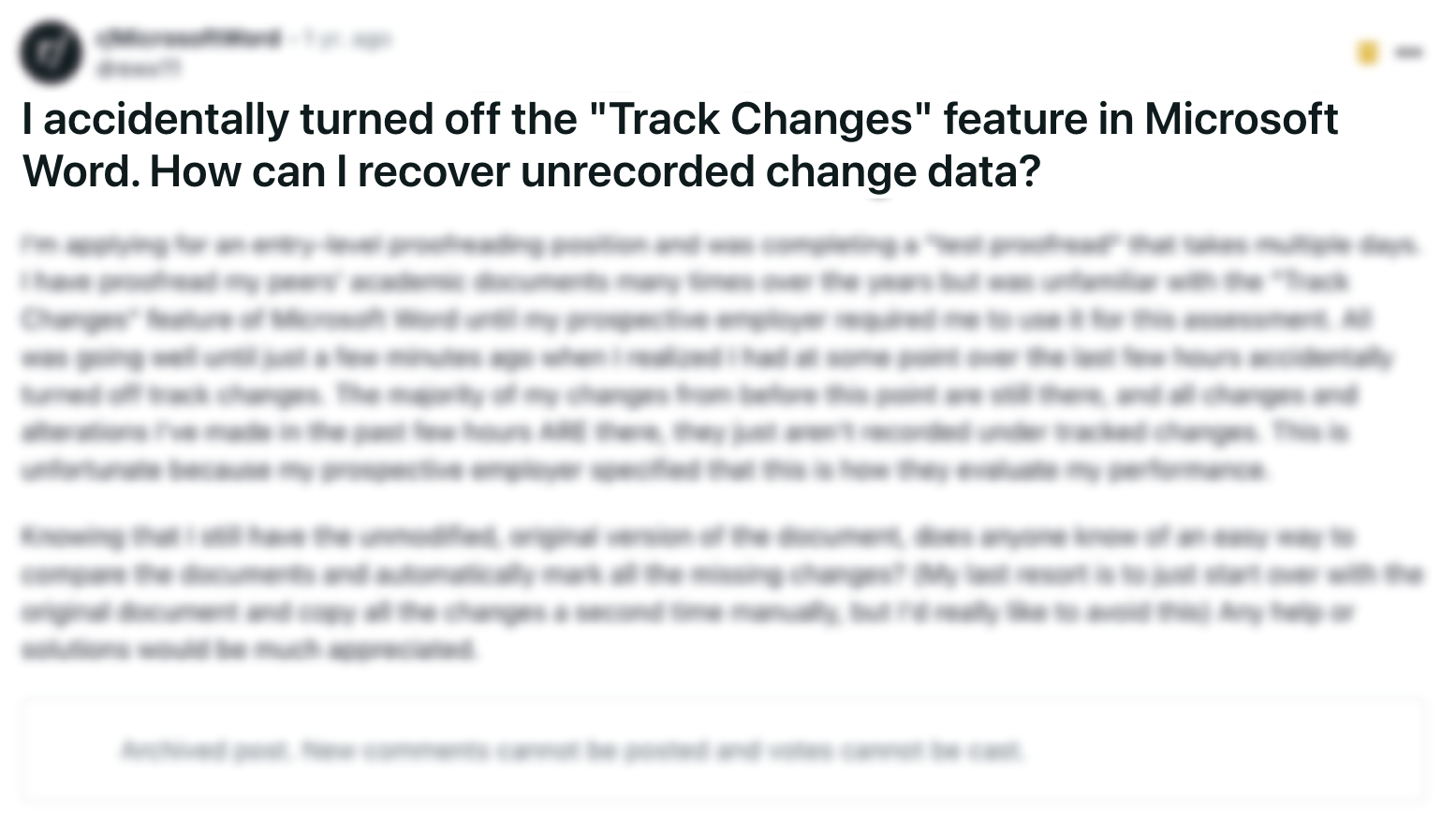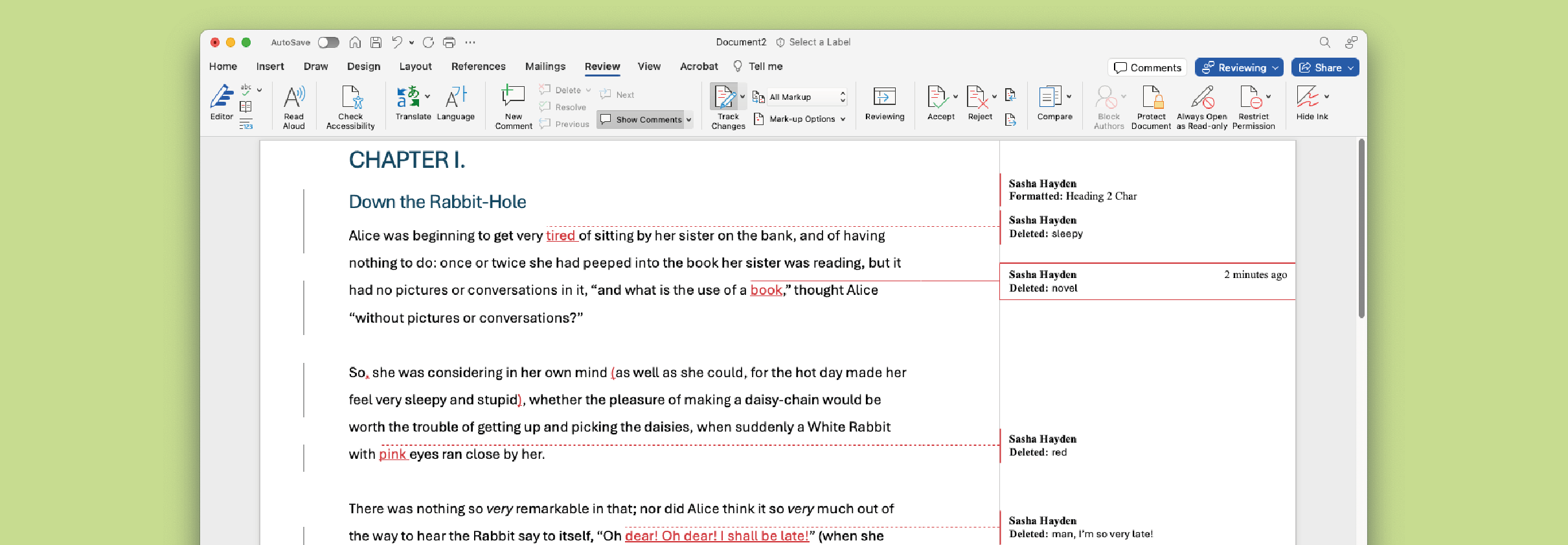Introduction
Whether it’s a multinational corporation updating its policies, a government institution amending regulations, or an
aircraft manufacturer refining technical specifications
, the challenges inherent in managing vast amounts of content revisions can be daunting. Yet, at the heart of this challenge lies the need to track, analyse, and integrate changes seamlessly and accurately. Traditional methods of manually tracking changes simply fall short when faced with the sheer volume and complexity of modern, usually digitalised, documents. This is where tracked changes and comparison solutions are utilised to help manage all-important document changes.
Tracked changes
, a staple feature in many word processing applications, provide a chronological record of modifications made to a document. However, the efficacy of managing tracked changes is not solely about identifying what has been altered; it’s equally crucial to accurately represent these changes within the context of the entire document. This nuanced aspect is where many publishers encounter significant hurdles.
Specialised comparison solutions
have therefore emerged as a more preferred option for document management, especially when dealing with vast amounts of documentation, where small but important changes occur. The reason why? These solutions go beyond mere identification, offering robust functionalities to analyse, merge, process, and synchronise changes across data and documents. In industries where precision and reliability are non-negotiable, comparison solutions provide the assurance of 100% accuracy—particularly vital for those in government, banking, aircraft manufacturing, and defence, where errors can have profound consequences.
The Problem with Tracked Changes for Large Documents
Understanding Tracked Changes
Tracked changes, often synonymous with “redlining” or “markup,” serve as a mechanism to record modifications made to a document. Originally conceived to streamline the editing and review processes in word processing software, tracked changes have become an indispensable tool for publishers across various industries.

A screenshot of the tracked changes feature within Microsoft Word
The primary purpose of tracked changes is twofold: to provide a transparent record of alterations and to facilitate collaboration among multiple stakeholders involved in the document’s creation or revision. By visually highlighting additions, deletions, and modifications, tracked changes offer a clear audit trail, enabling editors, authors, and reviewers to track the evolution of the document.
Common Scenarios and Impacts on Editing and Review Processes
In practice, tracked changes are instrumental in numerous scenarios encountered during the editing and review phases of document production. For instance, in a corporate setting, tracked changes facilitate the refinement of company policies or contractual agreements by allowing
legal teams to annotate proposed amendments
. Similarly, in academic publishing, tracked changes aid peer reviewers in providing detailed feedback on research manuscripts.
However, as the scale and complexity of documents increase, so do the challenges associated with effectively managing tracked changes.
Disadvantages of Tracked Changes
Performance Issues and Impact on Document Responsiveness
One of the most glaring drawbacks of relying solely on tracked changes, particularly for large documents, is the detrimental impact on performance. As edits accumulate and the document size grows, performance issues may arise, leading to sluggish responsiveness and increased system resource consumption. This degradation in performance can impede the efficiency of the editing and review process, frustrating users and hampering productivity.
Complexity in Navigating Numerous Revisions and Identifying Specific Edits
Another significant challenge posed by tracked changes in large documents is the inherent complexity in navigating through numerous revisions and identifying specific edits. As the document undergoes multiple rounds of revisions, the markup can become cluttered and convoluted, making it difficult for users to discern individual changes accurately. This lack of clarity not only prolongs the review process but also increases the likelihood of overlooking critical modifications, leading to errors or inconsistencies in the final document.
Further Challenges Presented with Tracked Changes
Furthermore, relying solely on tracked changes presents a multitude of additional challenges for publishers. These include difficulties in
maintaining version control
, particularly in collaborative environments where multiple contributors are concurrently editing the document. Moreover, there’s an inherent risk of data loss or corruption, especially when merging changes from disparate sources or incompatible file formats. Additionally, formatting issues may arise, particularly with complex elements such as tables and scalable vector graphics (SVGs), further complicating the review process and potentially causing delays in revision and publication timelines. Yet, the most notable disadvantage lies in its dependence on users to activate and consistently utilise the feature.
Screenshot of a reddit post on tracked changes
The Role of Structured Documentation
Structured Documentation and XML
If you’ve ever been tasked with managing critical documentation within your organisation, it’s likely you were dealing with structured documents. Structured documentation refers to the organisation of content in a consistent and hierarchical manner, making it easier to manage, navigate, and manipulate. Unlike unstructured documents, which lack a predefined format or hierarchy, structured documentation adheres to a specific schema or markup language, facilitating automated processing and analysis.



